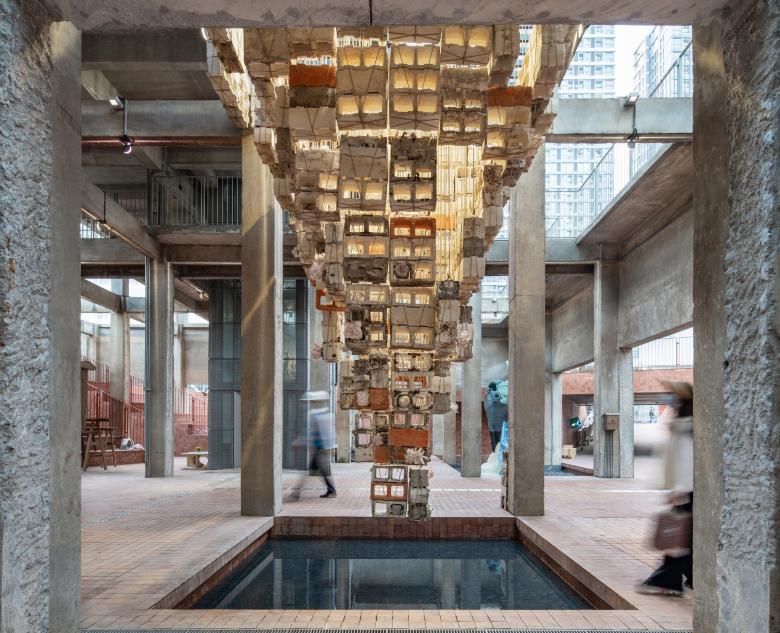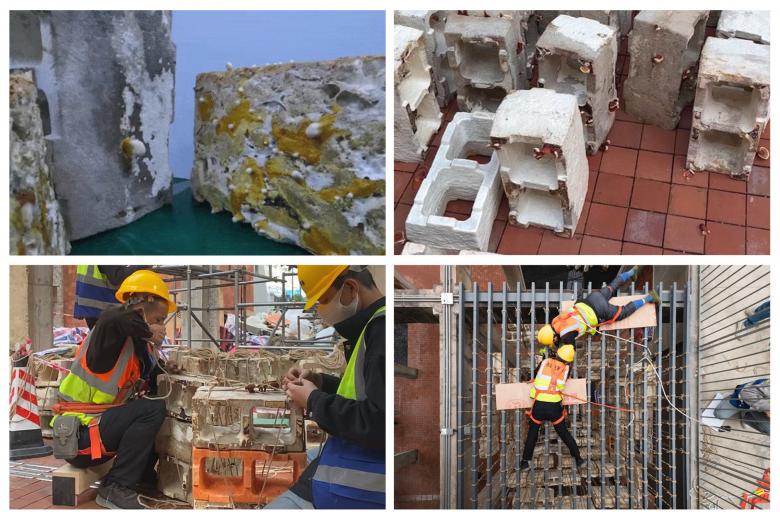Studio Link-Arc's 'Inverted Architecture'
As part of the 2022 Bi-City Biennale of Urbanism/Architecture (UABB2022) that ran from December 10, 2022 until March 12, 2023, Studio Link-Arc hung an inverted pyramid of 400 bricks made from mushrooms from the ceiling of a converted old brewery in Shenzhen.
Studio Link-Arc's Mushroom Brick Pyramid was part of the “More than Human Adventure” component of UABB2022, which went by the titled Urban Cosmologies. The New York-based architects responded to the theme with an installation exploring “the intersection between living organisms and architecture.” As the name of the piece indicates, the “living” is addressed through the use of bricks made from mycelium — the root structure of mushrooms — while “architecture” takes the form of a pyramid that is inverted from the norm, with the wide base at the top, near the ceiling, and the tip at the bottom, just above a pool set into the floor of the former industrial building. The choice of material recalls other temporary installations, such as Hy-Fi by David Benjamin's The Living at MoMA PS1 in 2014 and MycoTree at the Seoul Biennale of Architecture and Urbanism in 2017.
Take a visual tour through the Mushroom Brick Pyramid:
Location: Shenzhen, China
Architect: Studio Link-Arc
- Chief Architect: Yichen Lu
- Project Manager: Shiyu Guo, Luis Ausin, Simeng Qin, Zhenwei Zhong
- Project Team: Letty Lau, Zida Liu, Lingyun Yang, Zeynep Ugur, Rui Zhou, Chenhao Ma, Xiaoxuan Hu, Yu Lai, Shawlon Hsieh
Sponsor: Shenzhen Municipal People's Government
Undertaker: Shenzhen Planning and Natural Resources Bureau, Shenzhen Luohu District People's Government
Executed by: Guangdong Yuehai Land Group Co., Ltd
Supported by: Shenzhen Biennale Public Art Foundation, Shenzhen Urban Planning and Design Institute
Special Fund Support: Shenzhen Cultural Industry Development Special Fund
Chief Curators: Lu Andong, Wang Zigeng, Chen Bokang











